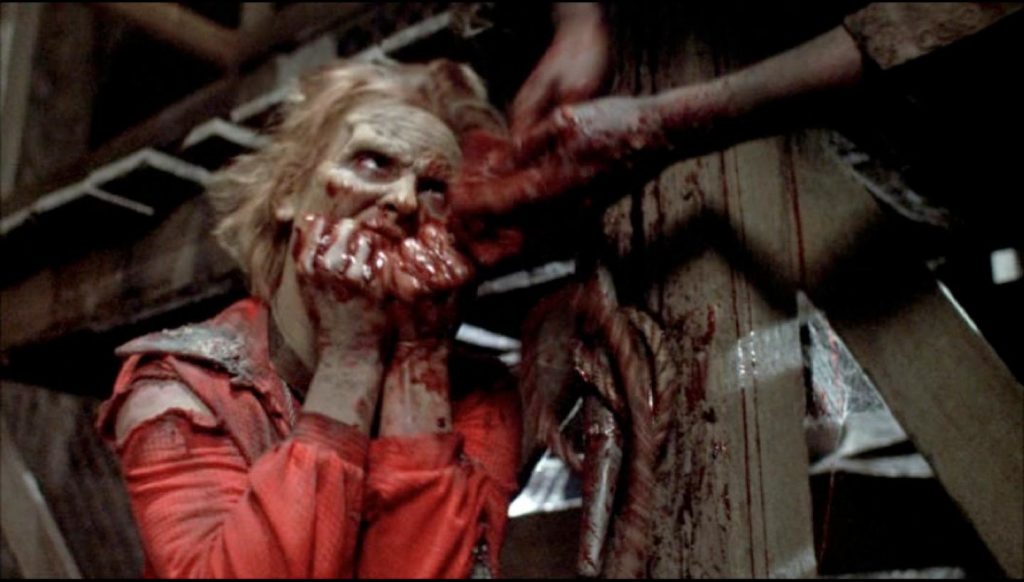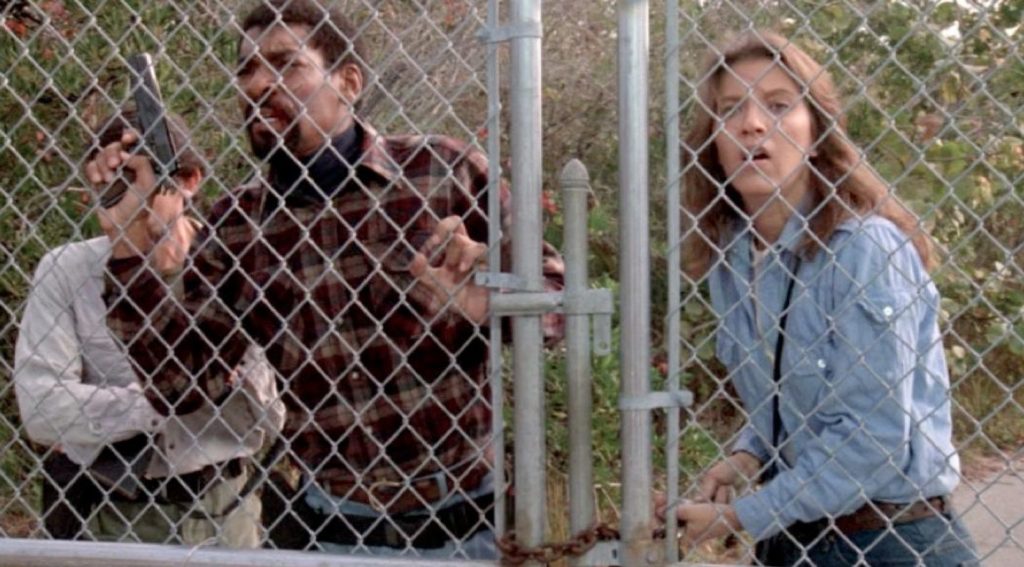“Day of the Dead” is unquestionably the most controversial and debated entry in George A. Romero’s unrivaled zombie trilogy. Many often overlook this third installment of Romero’s dead trilogy, preferring to praise “Dawn of the Dead” and “Night of the Living Dead.” However, “Day of the Dead” has so much to offer viewers, and it’s genuinely terrifying to watch. During production of “Day of the Dead,” Romero himself admitted time and again that the script he ended up with was far different from the film he envisioned, but the end result is a claustrophobic masterpiece which deconstructs the narcissism of the 1980s.
“Night of the Living Dead“ invoked the gritty sense of a society living moment by intense moment and being torn apart from an outside threat, something which struck a chord with audiences at the time. With “Dawn of the Dead,” Romero went the next step and proposed for the first time that not much separates the zombies from the humans.The anti-consumerist critique of the second film seems to have even more resonance today especially with our throw away culture, obsessed with the latest piece of technology and unable to survive without their mobile phone. If there was little societal change that had taken place between the first and second films, more frightening is just how little had changed between the second and third.
The film follows a small team of scientists, civilians and trigger-happy soldiers battle who are living in an underground bunker as they desperately to ensure the survival of the human race, but tension inside the base is reaching breaking-point, and the zombies are gathering outside.“Day of the Dead” is Romero’s attempt to deconstruct the Reagan era, with the macho man suddenly becoming a figure of popular culture, the man who smoked cigars and went on killing sprees all in the name of ‘’American justice’.” With this film, Romero chose to directly address the nature of human emotions and prejudices that threaten to collapse civilization as we know it. “Day of the Dead‘s” resistance to being pigeonholed into its decade frees it from merely being another one of those ‘80s zombie movie. One wonders what social topics Romero would have tackled if he hadn’t sadly passed away; would we have seen a zombie Donald Trump (shudder at the thought).

With the exception of the opening sequence set on the streets of Florida and of course it’s very bloody orgy of blood n’ guts towards the end of the film. “Choke on ‘em, you bastards” Joseph Pilato screams as his insides are consumed by the zombies. However, the film is far more interesting for one central zombie, the gentle Bub played by Sherman Howard whose portrayal depicts the filmmaker’s evolution of his zombies as they are now starting to learn and think for themselves. Bub is by far the most civilised zombie seen in the cinematic universe that Romero created. As the zombies evolve humankind’s civilization crumbles in its wake unable to deal with such extreme and hostile threats due to its infighting. This is a revolution as a new society is coming in (the zombies) and devouring (literally) the fragile old, which are incapable of handling it.
There is still horror which comes in the form of the zombies, in one scene zombie-patient on an operating table turns on his side and his insides slop out onto the floor, the sight is so gruesome that it leaves the viewer gagging as a result. And, of course, every Romero zombie film features an undead feeding frenzy montage at the end; this one is particularly nasty, even unsettling in its grotesqueries. The film starts off with hands bursting through the wall to grab Sarah (Lori Cardille), which is the most effective jumpscare ever and really creates the disturbing, tense atmosphere that follows. Romero was the master of this and no one has ever been able to pull this off as successfully as he could.
The film’s strengths lies in it’s brilliant performance from its central female lead, strong supporting roles from Terry Alexander, Richard Liberty and Jarlath Conroy, and a very deranged psychotic Pilato whose Rhodes is far more scarier than the actual undead. “Day of the Dead,” maybe Romero’s most overlooked film but it deserved our attention. Yes, it is an imperfect work featuring big ideas, but it has several wonderfully horrid individual scenes, and gory zombie effects unmatched in the master’s career.
– by Bianca Garner


